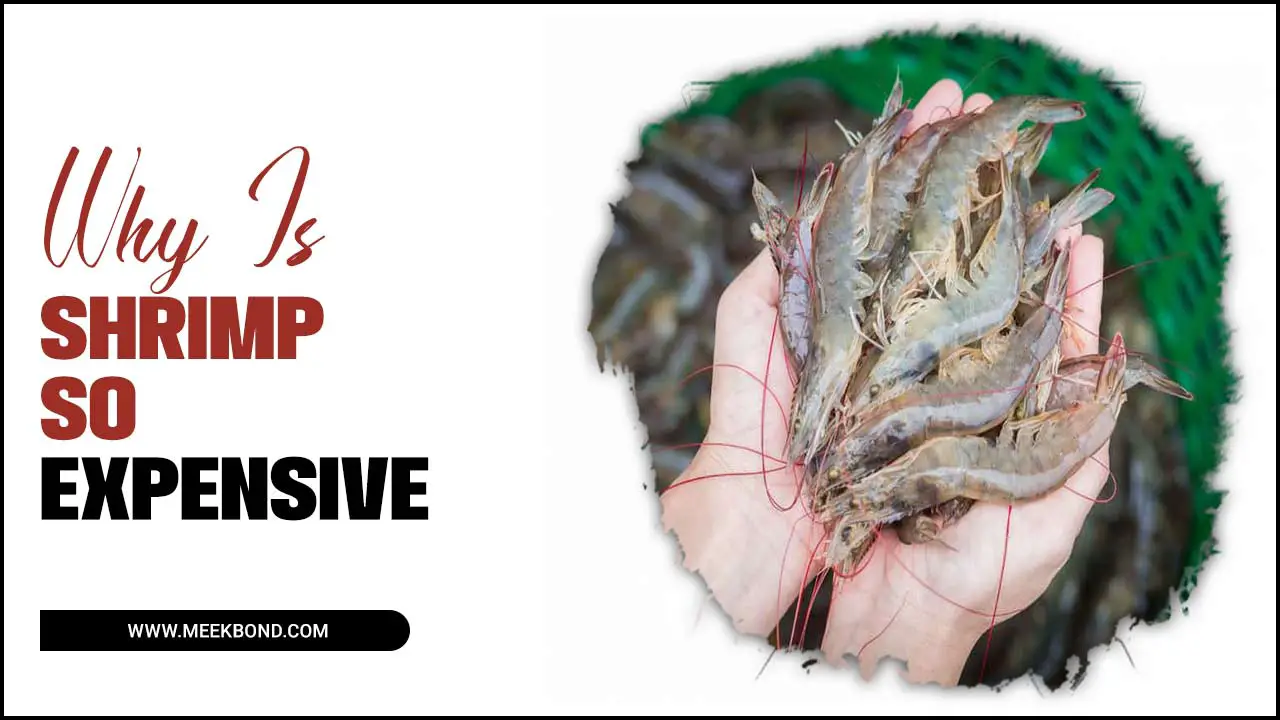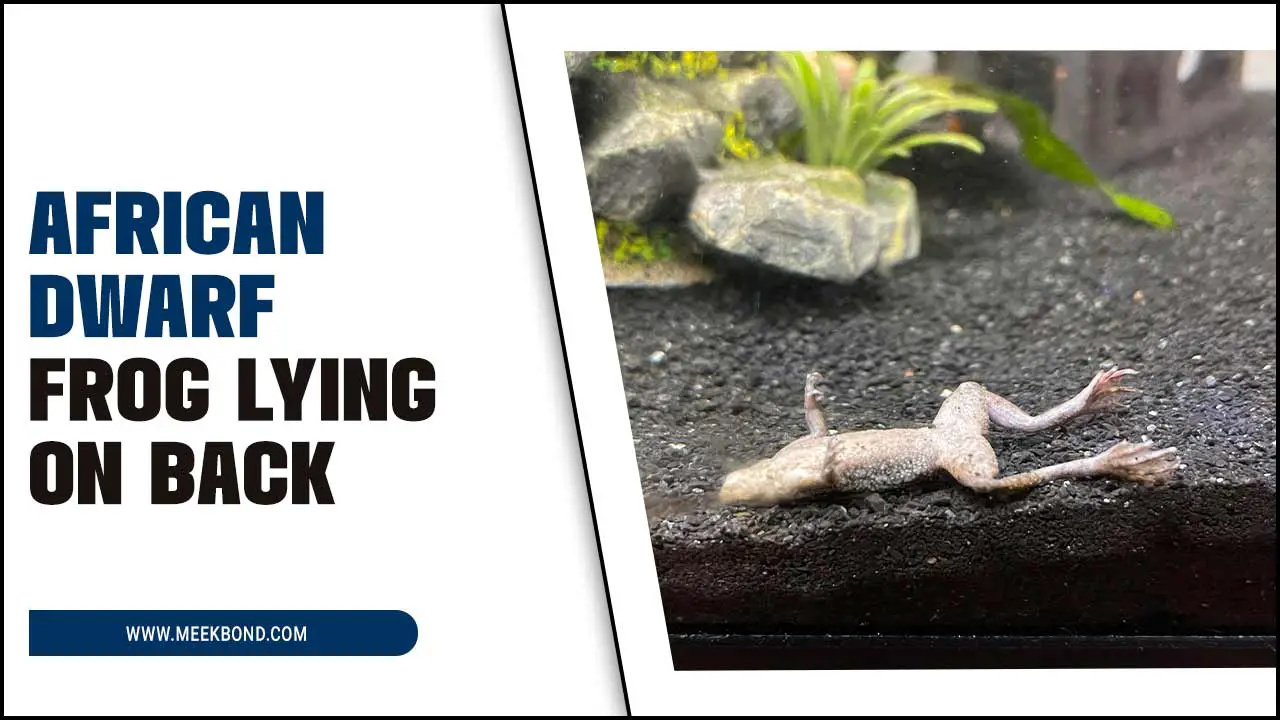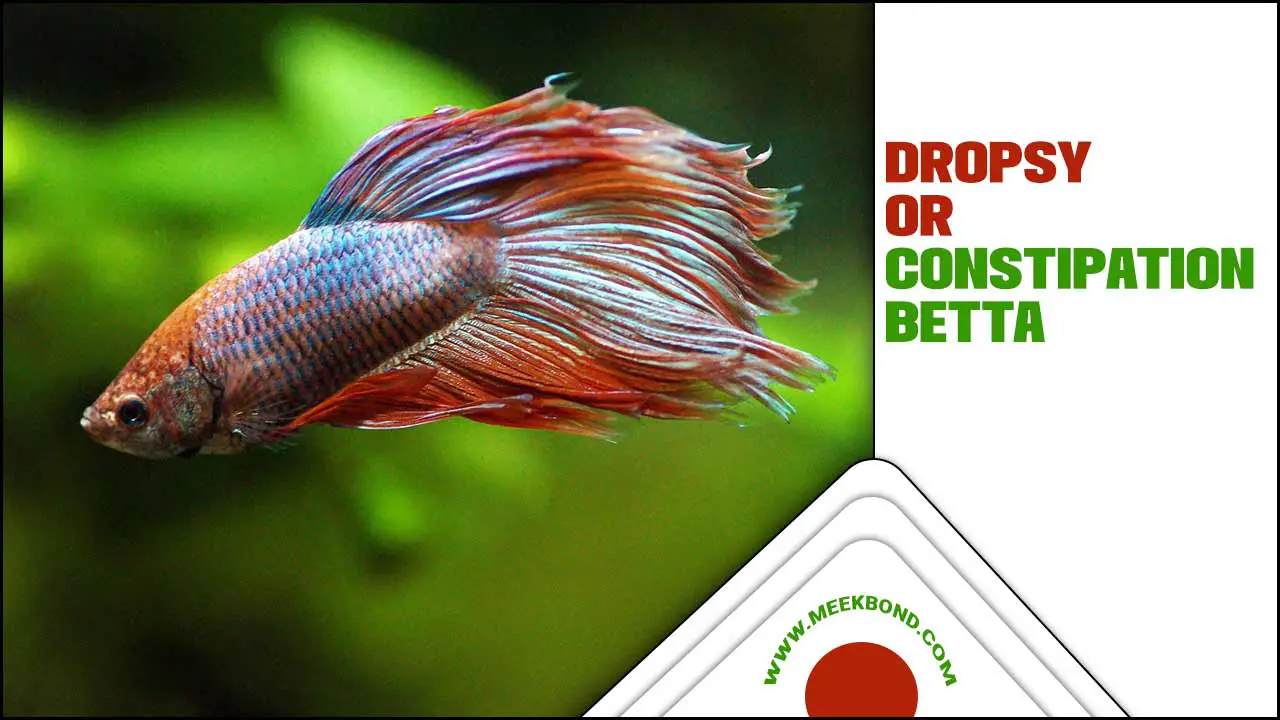Pea puffers, dwarf puffers, are freshwater fish native to Southeast Asia. These tiny fish are incredibly popular in aquariums due to their unique appearance and interesting behaviours. We will discuss trimming pea puffer teeth, why it is essential, and how to identify overgrown teeth.
We will also provide post-trimming care tips and ways to prevent overgrown teeth in the future. Whether you are a new or experienced pea puffer owner, this guide will equip you with all the tools you need to ensure your pet’s dental health and overall well-being. So let’s dive in.
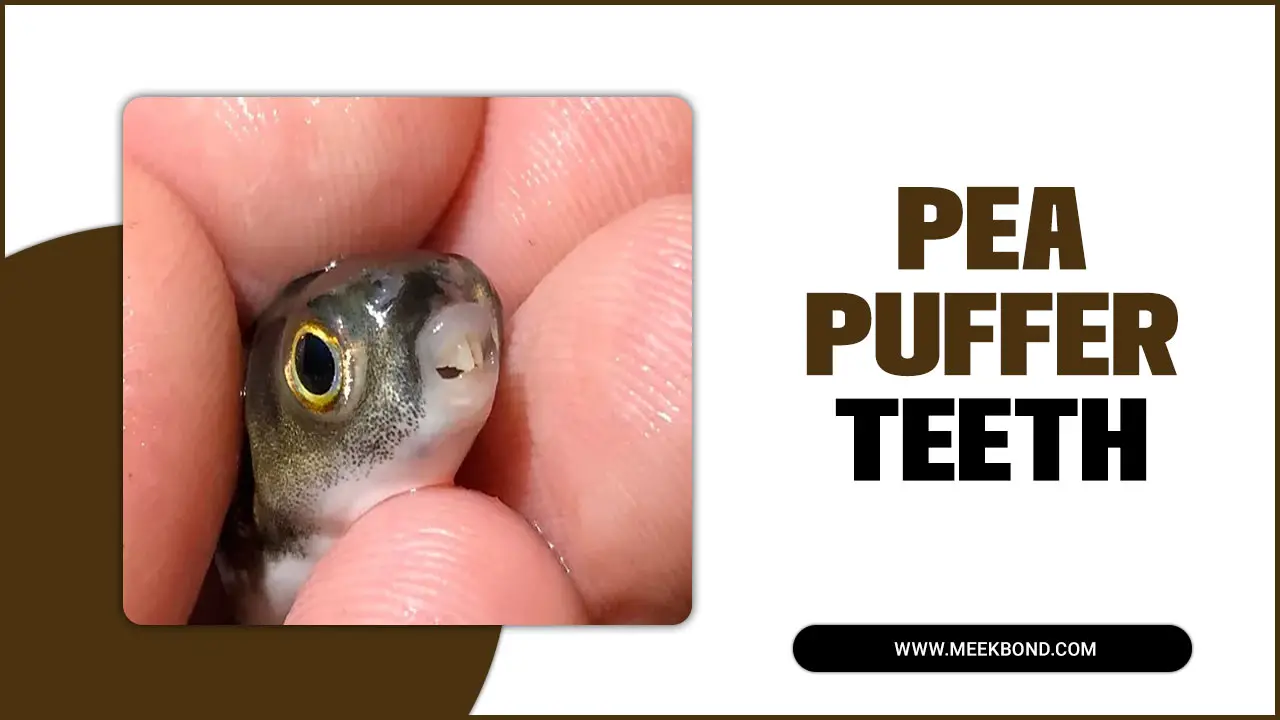
About Pea Puffers
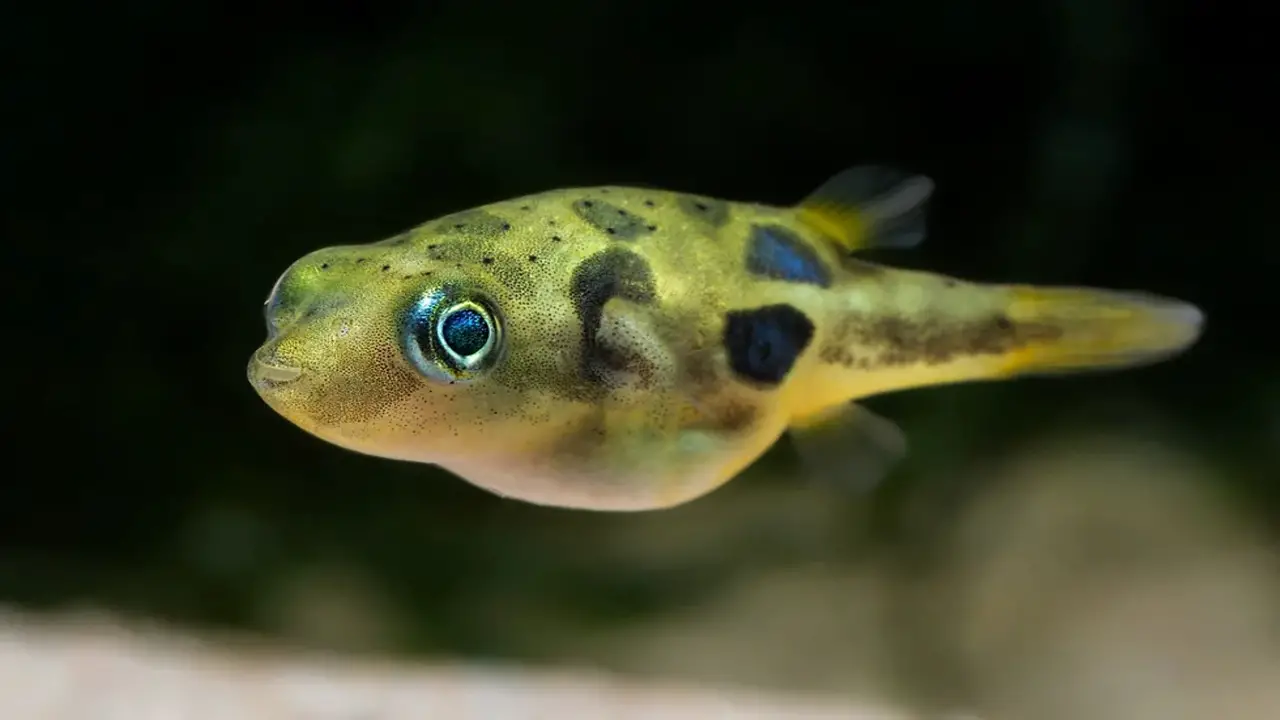
Pea puffers, scientifically known as Carinotetraodon travancoricus, originate from Kerala, India. These small freshwater fish can grow up to an inch in size and are characterized by their unique stripe pattern and vibrant colors. Pea puffers inhabit slow-moving warm waters with dense vegetation in their natural habitat.
Unfortunately, due to habitat loss and the aquarium trade, they are listed as a vulnerable species on the IUCN Red List. This makes it even more important for hobbyists to provide them with proper care and suitable tank conditions. When kept in home aquariums, pea puffers are usually grouped together in small tanks, with a minimum tank size of one gallon or approximately four litres per puffer.
Characteristics And Behavior
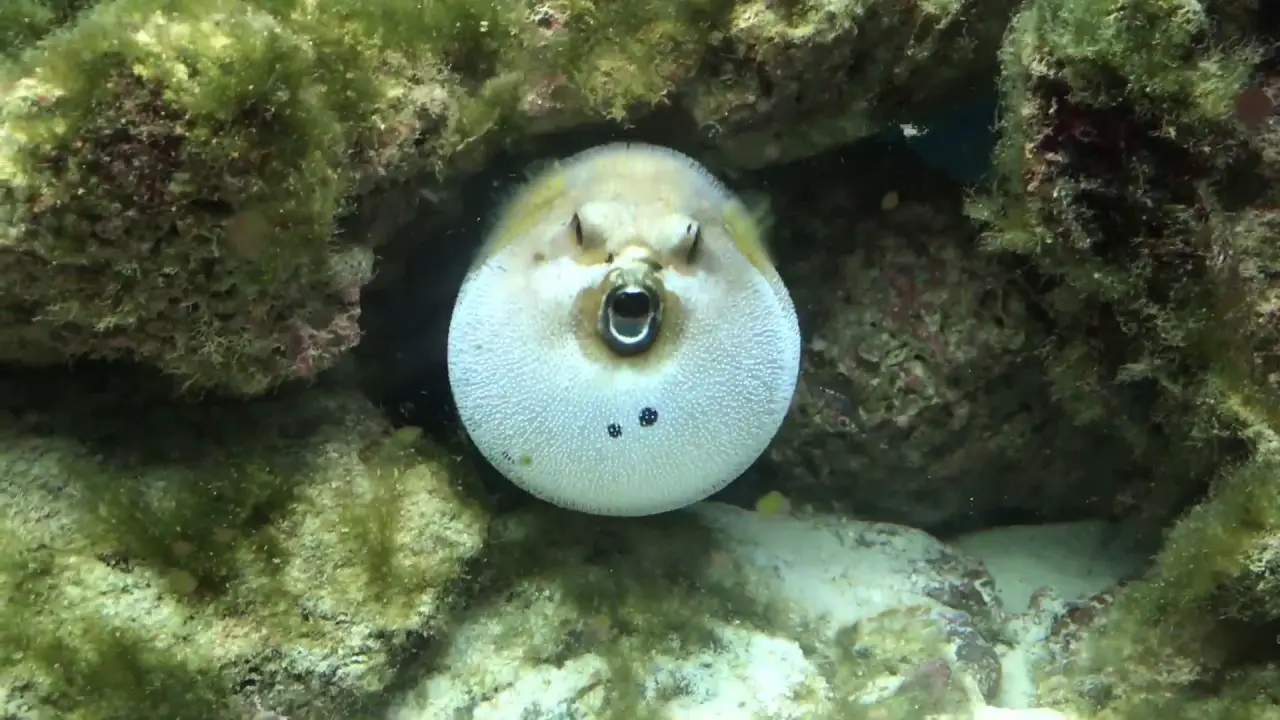
Pea puffers are known for their curious and active nature. They prefer living in small groups and can become stressed if kept alone. These tiny fish can be territorial and exhibit aggressive behavior, especially towards similar-sized fish.
It’s important to note that pea puffers have a relatively short lifespan of around 2-3 years in captivity. They require a well-maintained tank with suitable hiding spots and plant coverage to ensure their well-being. Creating an environment miming their natural habitat is key to their health and happiness.
Natural Habitat
Pea puffers, also known as Carinotetraodon travancoricus, are native to Kerala, India’s backwaters and rice paddies. They thrive in habitats with warm, slow-moving water and abundant vegetation. The water in their natural habitat tends to be slightly acidic, with pH levels ranging from 6.5 to 7.5.
In this environment, pea puffers coexist with other species, such as molluscs and small fish. Their diet primarily consists of small invertebrates, worms, and seafood. These unique fish prefer living in small groups and can be found in home aquariums, where hobbyists provide suitable tank conditions and replicate their natural habitat.
Why Is Teeth Trimming Essential For Pea Puffers?
Pea puffers require regular teeth trimming to avoid overgrowth and dental problems. This practice is essential for maintaining their overall health, proper dental hygiene, and preventing potential complications. Regular teeth trimming can promote longevity and vitality in these charming aquatic creatures and keep them happy in their environment.
Overgrown teeth can lead to eating difficulties, infections, and bacterial growth, harming their health. As such, scheduling routine veterinary appointments for professional teeth trimming is imperative as part of your pea puffer’s care plan.
Consequences Of Overgrown Teeth
Overgrown teeth in pea puffers can seriously affect their health and well-being. One of the main issues is that it hinders their ability to eat properly, leading to malnutrition. The discomfort and pain caused by overgrown teeth can also make it difficult for them to close their mouths properly.
If left untreated, overgrown teeth can result in infections and oral diseases, impacting their overall health negatively. Pea puffers may lose weight and become weak due to the inability to consume enough food. These consequences can significantly affect the pea puffer’s quality of life and overall health.
The Process Of Trimming Pea Puffer Teeth
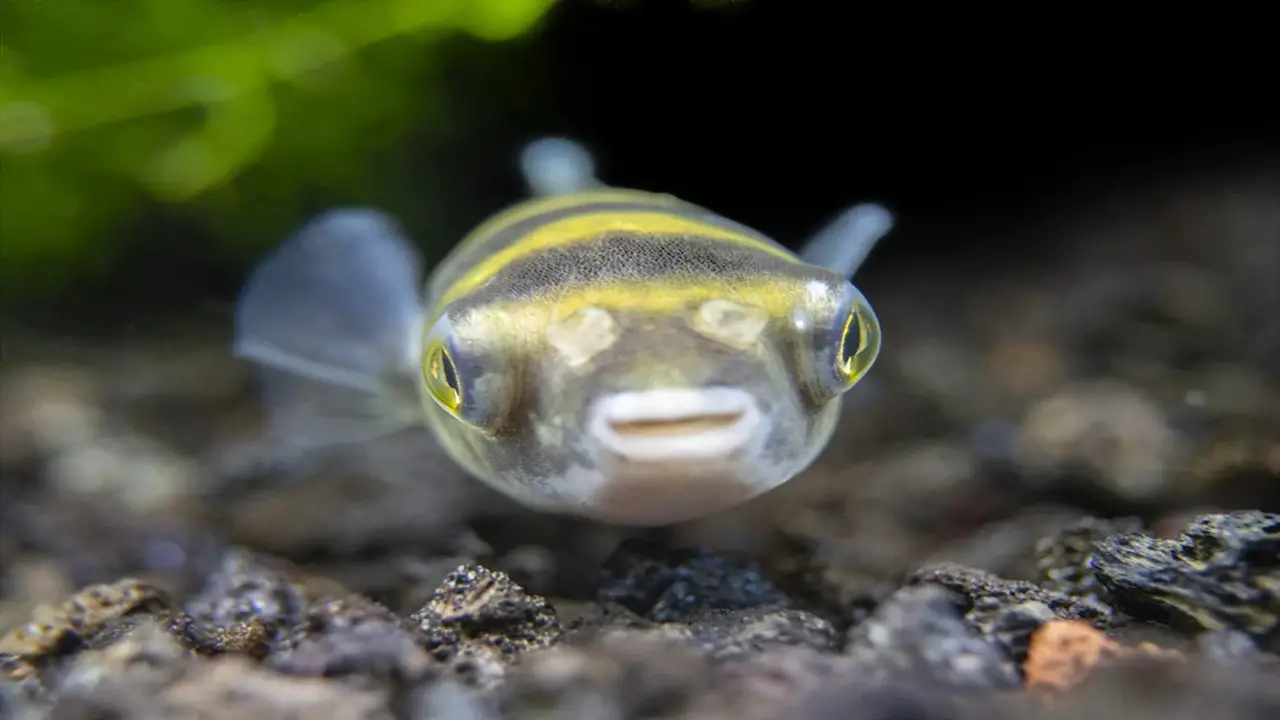
Proper preparation is essential before attempting to trim a pea puffer teeth. The process requires patience and a steady hand to ensure the safety and well-being of the pea puffer. After the trimming procedure, it’s important to clean and care for the trimmer to maintain hygiene and prevent contamination.
Additionally, regularly monitoring and assessing the pea puffer’s dental health after trimming is recommended to ensure their overall well-being. By following these steps, you can effectively trim a pea puffer’s teeth and promote their dental health. Here are full step by step processes to trimming pea puffer-teeth.
Preparation Steps
Pea puffers have unique dental needs, as teeth continuously grow and require regular maintenance. Before attempting to trim your pea puffer’s teeth, it is important to properly prepare for the procedure. Here are some steps to follow:
1. Gather the necessary tools: You will need a pair of small, sharp scissors or nail clippers, a clean towel or cloth, and a small container filled with aquarium water.
2. Create a calm environment: Find a quiet and well-lit area where you can safely handle your pea puffer without causing stress. It may be helpful to dim the lights in the room and play some soothing music to help relax your puffer.
3. Practice proper hygiene: Wash your hands thoroughly with soap and warm water before handling your puffer to prevent any potential contamination.
4. Secure your puffer: Gently wrap your puffer in a clean towel or cloth, making sure to leave its mouth exposed for ease of access during the trimming process.
By following these preparation steps, you can ensure a safe and successful tooth-trimming experience for your pea puffer.
Preparing The Pea Puffer For Trimming
To ensure a smooth and stress-free teeth-trimming process for your pea puffer, it’s important to take the necessary steps in preparing them. Gradually acclimating the puffer to being handled can help reduce their stress levels. By implementing positive reinforcement techniques, you can create a positive association between handling and rewards for the puffer.
It’s crucial to ensure that the puffer is calm before attempting the trimming process, as this will make it easier to handle them. When it comes to actually handling the puffer, using gentle and reassuring movements is key to avoid causing unnecessary distress. Additionally, maintaining a calm and quiet environment during the process will help minimize distractions and anxiety for the puffer.
Trimming The Pea-Puffer Teeth
Positioning the pea puffer securely and comfortably is crucial for easier access to its teeth during trimming. Carefully trim the overgrown teeth with precision and caution to prevent injuries to the puffer’s mouth. It is important to take breaks if needed, allowing the pea puffer to rest and recover during the procedure.
Continuously monitor the well-being of the puffer and adjust your approach accordingly. If you are unsure or uncomfortable trimming the teeth, it is advisable to seek professional assistance to ensure the safety and proper care of the pea puffer.
Cleaning And Caring For The Trimmer Afterward
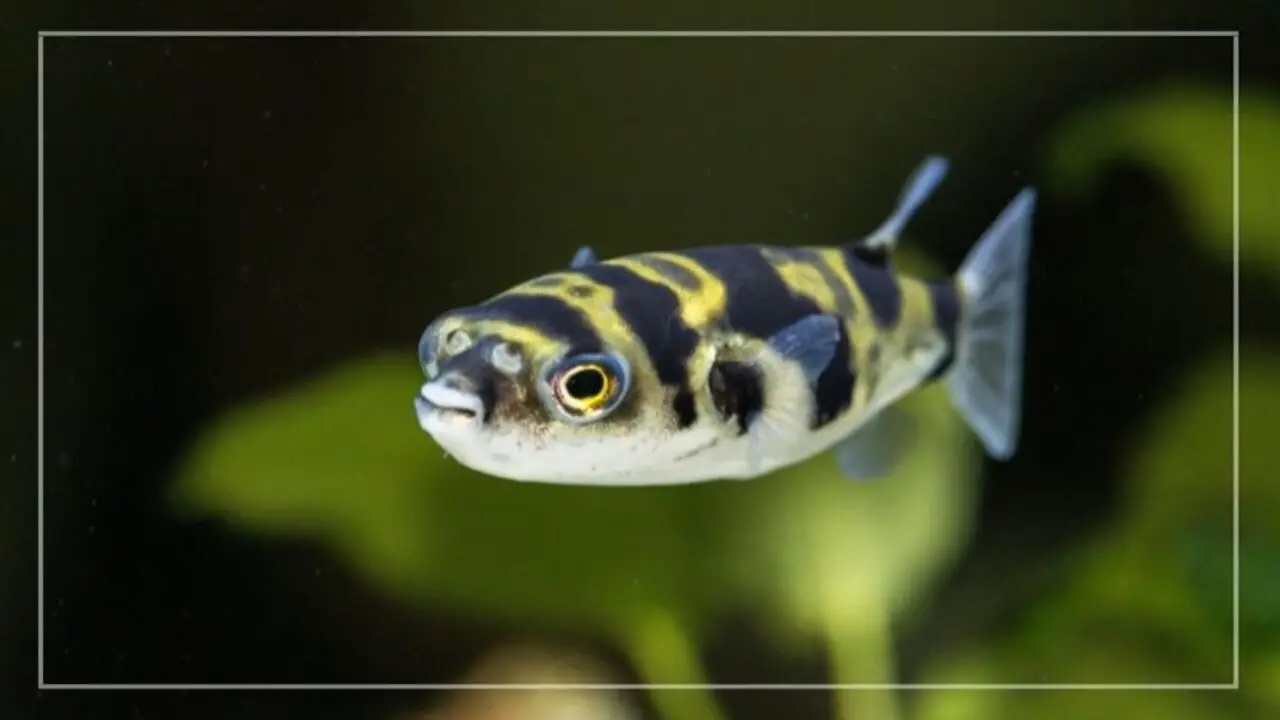
After trimming your pea puffer’s teeth, cleaning and caring for the trimmer properly is important. Maintaining hygiene is crucial, so thoroughly clean and sterilize the trimmer after each use. This helps prevent any potential contamination and keeps the tool in good condition.
When not in use, store the trimmer in a clean and dry environment to further prevent any potential contamination. Regularly inspecting the trimmer is also essential. Look for any signs of damage or deterioration that may affect its effectiveness or safety. If you notice any issues, it may be time to replace the trimmer.
How To Identify Overgrown Teeth In Pea Puffers?
Identifying overgrown teeth in pea puffers is an important aspect of their dental health. Pea puffers have constantly growing teeth; if not properly maintained, they can become overgrown and cause serious health issues. Observing changes in the puffer’s eating habits is one way to identify overgrown teeth.
If they are struggling to eat or are avoiding certain foods, it may be a sign that their teeth are too long. Additionally, you can gently examine their mouth for any visible signs of overgrown teeth, such as protruding or misaligned teeth. If you suspect your pea puffer has overgrown teeth, it is important to seek veterinary care as soon as possible to prevent further complications and ensure dental health.
Signs And Symptoms
Signs and symptoms are important indicators that can help identify various health conditions. It is important to note that signs and symptoms can vary depending on the individual and the underlying health condition. It is always best to consult a healthcare professional. Some of the common signs and symptoms include:
- Fever: A high body temperature is often a sign that your body is fighting an infection or inflammation.
- Pain: can be sharp or dull and occur in different body parts. It can be a sign of injury, disease, or inflammation.
- Fatigue: Feeling tired or exhausted for no apparent reason can be a symptom of many health conditions, including anemia, depression, or sleep disorders.
- Skin changes: Skin changes such as rashes, bumps, or discoloration can indicate allergies, infections, or skin diseases.
- Difficulty breathing: Shortness of breath or difficulty breathing can indicate respiratory problems such as asthma, pneumonia, or chronic obstructive pulmonary disease.
Post-Trimming Care For Pea Puffers
After trimming the teeth of your pea puffer, it is crucial to provide appropriate post-trimming care to ensure their well-being and overall health. Start by closely observing your pea puffer for any signs of discomfort or infection.
Promptly addressing any issues that arise is essential for their recovery process. Additionally, maintaining clean and well-maintained water conditions in their tank is vital. This includes regular water changes and proper filtration to prevent the buildup of harmful substances like nitrogen.
To support healing and growth, providing your pea puffer with a balanced diet is important. Ensure they receive their favorite foods and include various options to meet their nutritional needs. Keep a close eye on the regrowth of their teeth to prevent further overgrowth. Lastly, consider providing appropriate tank mates to minimize stress and create a comfortable environment for your pea puffer.
Monitoring Health And Recovery
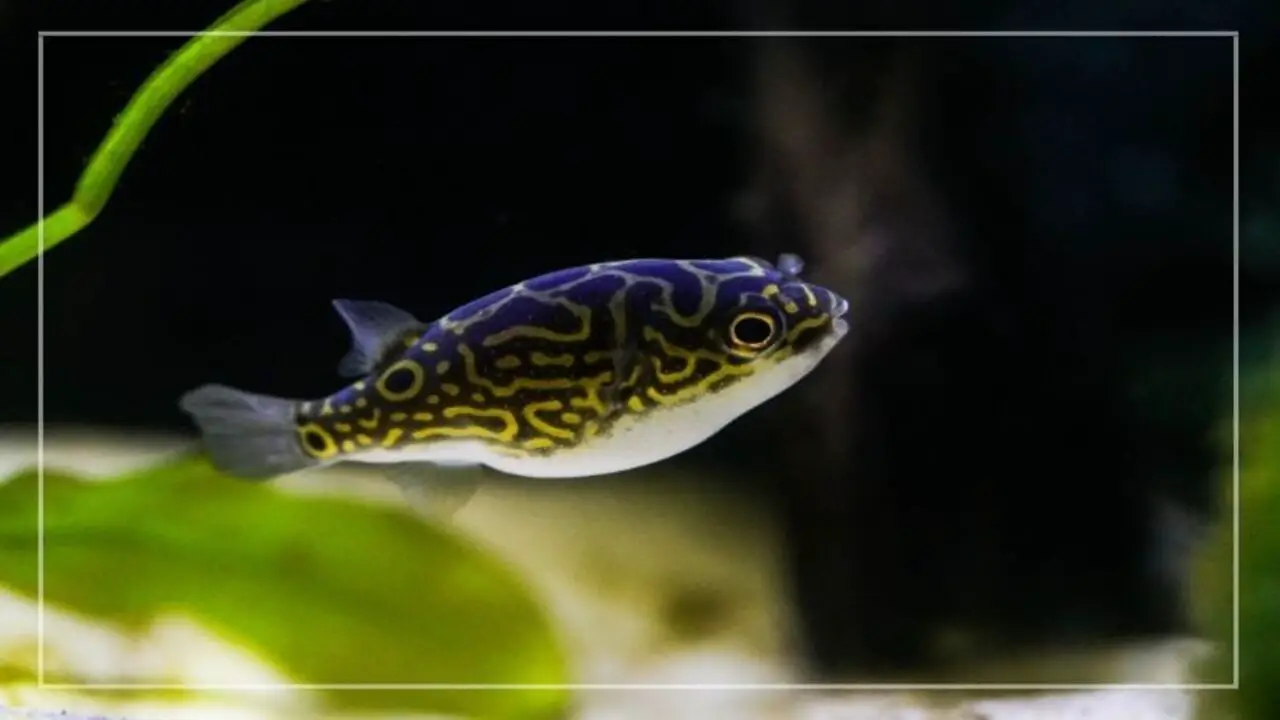
Regularly checking for abnormal behavior or physical changes is crucial when monitoring the health and recovery of pea puffers. Monitoring water parameters, especially ammonia and pH levels, is also important, as these can greatly impact their well-being.
Additionally, looking out for signs of poor water quality, such as excessive algae or detritus, is essential. Monitoring appetite and digestion is another aspect to consider, ensuring that the puffers receive proper nutrition and recover well. Lastly, observing for signs of aggression or bullying from tank mates is vital to ensure a stress-free environment for these small and delicate fish.
Adjusting The Diet
It is essential to adjust their diet to ensure a smooth transition after trimming pea-puffer teeth. Soft foods like brine shrimp or bloodworms can be offered to accommodate their trimmed teeth and prevent any discomfort while feeding. Additionally, crunchy foods like snails or crustaceans can provide dental exercise, helping to keep their teeth in good condition.
It is also important to provide a variety of pellets or flakes to ensure a balanced and nutritious diet. However, it is crucial to avoid feeding large or hard foods that may cause further dental issues. Monitoring for appetite or weight loss changes is vital to ensure the pea puffer’s overall health and well-being.
Preventing Overgrown Teeth In Pea Puffers
To prevent overgrown teeth in pea puffers, it is crucial to maintain a varied and balanced diet that prevents nutrient deficiencies. Providing appropriate substrate or decorations in the tank can encourage dental exercise, helping to keep the teeth trimmed naturally. Additionally, ensuring proper filtration and water flow is essential in preventing plaque and tartar buildup, which can contribute to tooth overgrowth.
Considering the tank size and stocking density is also important to minimize stress and aggression among the pea puffers. Lastly, regularly monitoring the teeth and trimming them if necessary will help prevent overgrowth and maintain the overall dental health of the pea puffers.
Balanced Diet And Feeding Practices
When feeding your pea puffer fish, it’s important to ensure a balanced diet that provides all the essential nutrients. A mix of live, frozen, and dry foods is recommended to meet their dietary needs. Offering molluscs or small snails can also help naturally wear down their teeth, preventing overgrowth.
However, avoiding overfeeding is crucial, as this can lead to obesity and dental issues. Adding vegetables or algae-based foods to their diet can provide additional fiber for digestive health. Monitoring the fish’s body condition and adjusting feeding to maintain optimal health is important.
Are There Alternatives To Manual Teeth Trimming?
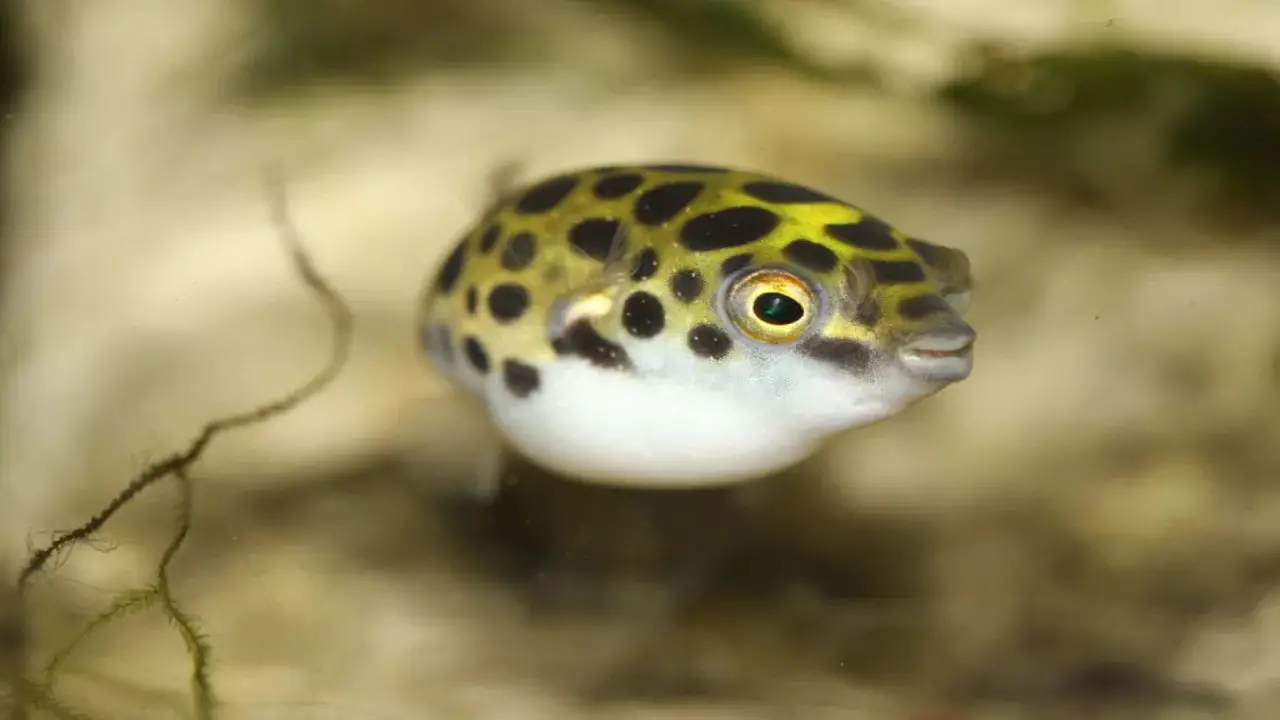
While manual teeth trimming is the most common method, there are alternatives for pea puffers. Tank decorations like driftwood or moss provide dental exercise, small fish or shrimp can help wear down teeth naturally, maintaining proper water conditions promotes healthy dental growth, and consulting a fish dentistry veterinarian can provide alternative options. Regularly monitoring teeth growth is essential for early detection.
Conclusion
Pea puffer teeth are a unique adaptation that allows these tiny fish to feed on snails and other hard-shelled prey. Their sharp teeth are designed to crush and break through the shells, making them highly effective hunters.
As owners of pea puffers, it is important to provide them with a diet that includes appropriate prey items to keep their teeth healthy and strong. By understanding the importance of pea-puffer teeth and meeting their dietary needs, you can ensure these fascinating little fish’s overall well-being and happiness.
Frequently Asked Questions
What Is A Pea Puffer?
A Pea Puffer is a small freshwater fish from the Tetraodontidae family. It has the unique ability to inflate itself as a defence mechanism. These adorable fish have continuously growing teeth, which need regular trimming to prevent overgrowth and ensure their health and happiness.
Do You Have To Trim Puffer Fish Teeth?
Trimming puffer fish teeth is necessary in some cases. Pea Puffers have continuously growing teeth; failure to trim them can lead to overgrowth and health issues. Only an experienced fish keeper or veterinarian should perform the trimming cautiously to avoid harming the fish.
How Do You Keep Puffer Fish Teeth Short?
Regular trimming is essential to keep puffer fish teeth short. Offer hard objects like snail shells or rocks for them to chew on, which helps naturally wear down their teeth. When the teeth become long, carefully trim the tips using nail clippers or scissors. Consider having a veterinarian or experienced fishkeeper perform the procedure.
What Do Pea Puffers Eat?
Pea puffers are carnivorous fish that thrive on a diet of small live or frozen foods like brine shrimp, bloodworms, and daphnia. It’s important to offer them a varied diet to ensure they get all the necessary nutrients. Feed them small amounts multiple times a day to prevent overfeeding.
What Do Pea Puffer Eggs Look Like?
Pea puffer eggs are small, clear, and have a yellowish tint. They are typically laid on plants or aquarium decorations. A female pea puffer can lay up to 100 eggs at a time. Removing adult pea puffers from the tank during breeding is crucial to prevent them from consuming their own eggs.

Aquarium passion is all about connecting with the aquatic life and providing education to the public on the importance of these creatures. We showcase a wide variety of marine life through our exhibits as well as working with schools to provide unique learning opportunities for students of all ages.

